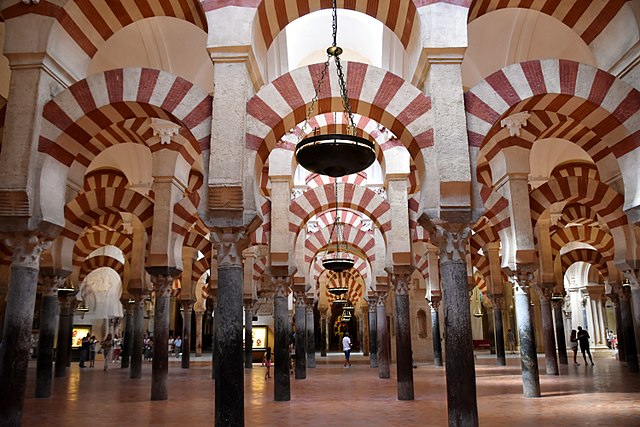A rib vault or ribbed vault is an architectural feature for covering a wide space, such as a church nave, composed of a framework of crossed or diagonal arched ribs. Variations were used in Roman architecture, Byzantine architecture, Islamic architecture, Romanesque architecture, and especially Gothic architecture. Thin stone panels fill the space between the ribs. This greatly reduced the weight and thus the outward thrust of the vault. The ribs transmit the load downward and outward to specific points, usually rows of columns or piers. This feature allowed architects of Gothic cathedrals to make higher and thinner walls and much larger windows.
Romanesque rib vaulting, Peterborough Cathedral (begun 1118) south aisle
Gothic rib vaulting, Reims Cathedral (begun 1221) nave
Rib vault from Villa Sette Bassi, Rome (c.150)
Chapel of Villaviciosa, Great Mosque of Cordoba (962–965)
Islamic architecture comprises the architectural styles of buildings associated with Islam. It encompasses both secular and religious styles from the early history of Islam to the present day. The Islamic world encompasses a wide geographic area historically ranging from western Africa and Europe to eastern Asia. Certain commonalities are shared by Islamic architectural styles across all these regions, but over time different regions developed their own styles according to local materials and techniques, local dynasties and patrons, different regional centers of artistic production, and sometimes different religious affiliations.
Image: Great Mosque of Cordoba, interior, 8th 10th centuries (38) (29721130342)
Image: 20180301124354 IMG 4179And 6more Interior 3
Image: Selimiye Mosque, Dome
The Mosque of the Prophet, standing on the site of Muhammad's first mosque in Medina. The present-day building is the result of many reconstructions and expansions up to modern times.








